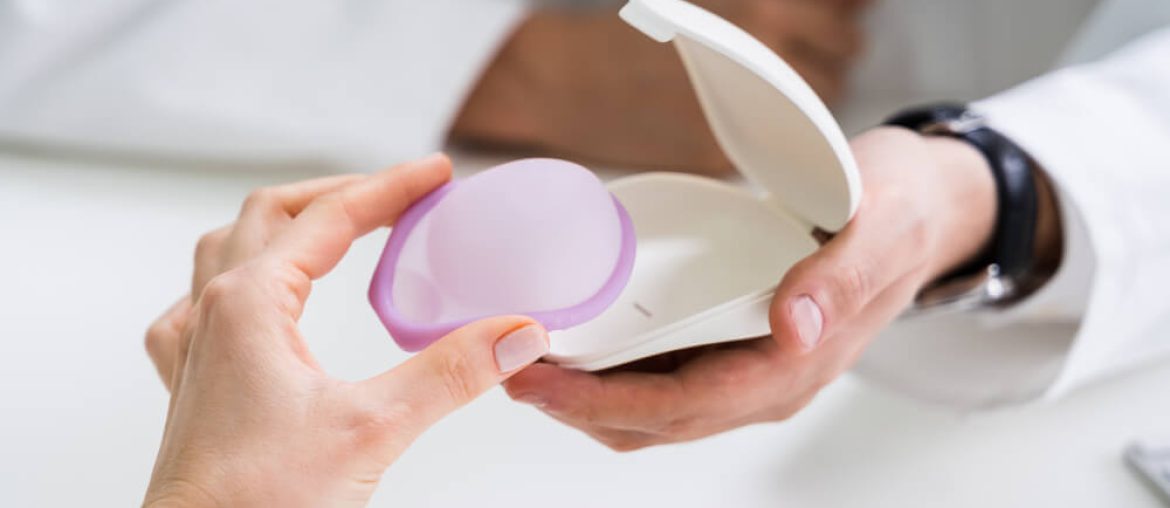How to use a diaphragm
- Hold the diaphragm as if it were a cup and apply 1 teaspoon of spermicide in the center, making a circle about the size of a quarter. Spermicide may be applied to the rim of the diaphragm to ease insertion.
- Squeeze the diaphragm firmly between the thumb and forefinger so that it becomes narrow enough to insert into the vagina. Assume a comfortable position: standing with one foot on a chair, the bed, or the toilet seat; squatting on the floor; or lying on the bed with the knees drawn up.
- Still squeezing the diaphragm, push it into the vagina as far down and back, as it will go. When you release the diaphragm, the rim will regain its round shape and fit around the cervix. When the diaphragm is in place, you should be comfortable and not feel the diaphragm inside. Your partner should not feel it either. If the diaphragm feels uncomfortable, remove it and try again.
Removing the diaphragm
- Hook your finger or thumb over the rim toward the front, and pull the diaphragm down and out. Try to use the same position for removal that you used for insertion. If you have problems, try the squatting position. You may also try breaking the suction by slipping a finger between the diaphragm and the sides of the vaginal wall, and then pulling the diaphragm out.
Important Information
- To prevent pregnancy, you must use the diaphragm each time you have sexual intercourse. The diaphragm can be kept at the bedside, along with spermicide and tissues, so that it can be inserted as part of foreplay. it is not necessary to insert the diaphragm in private. Partners can insert and check the diaphragm and many couples enjoy participating together in this form of contraception. If you regularly forget to use the diaphragm, if you do not feel comfortable with it, or if you think using it is too much bother, then it is not the right birth control method for you.
- The diaphragm with spermicide can be inserted into the vagina up to six hours before intercourse. It must be left in place for six hours after intercourse. It can then be removed.
- If you want to have sexual intercourse again, and if it has been more than six hours since last intercourse, the diaphragm must be removed and washed. In this case, additional spermicide should be added before the diaphragm is reinserted. If it has been less than six hours since the diaphragm was first inserted, it is not necessary to add more spermicide as long as the diaphragm is still in position and has not been dislodged.
- Do not panic if the diaphragm does not budge when you first try to remove it. Just leave it in and try again later when you are more relaxed. There is no way the diaphragm can get lost or disappear in the body. You can shower, use the toilet, walk around, work, and play with the diaphragm in place. It should not, however, be left in place for more than 24 hours. Delaying the removal until after that time will encourage a sour smell and the growth of bacteria. The bacteria can cause irritation and discharge. Removal within 24 hours is especially important for women who are prone to bladder infections. Because toxic shock syndrome has rarely been reported in diaphragm users, any symptoms of infection, such as fever, light-headedness, chills, rash, or pain should be reported to your health care provider immediately.
- Douching is not necessary when the diaphragm is used. If you have a p problem with spermicidal cream or jelly leaking from the vagina after intercourse, use a tampon or a small pad to keep your clothes dry.
- Keep the diaphragm clean and dry between uses. It is made of latex rubber and may wear out after one or two years. Inspect it by holding it up to the light to look for holes. If you think the diaphragm is becoming stretched or worn out, ask your health care provider to check it for you.


















